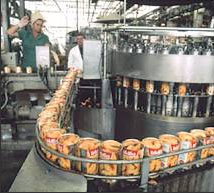
100% cotton dish towels were allowed, but paper towels could only be used for cleanup.Īll measurements were by metric weight, and none by volume. Vinyl gloves were used in food preparation for sanitary control in both legs of the trial, but actual food contact with the gloves was minimal and incidental. Only glass, stainless steel, aluminum foil, and tight grain maple cutting boards were allowed. PM2.5 levels were monitored via sensors from PurpleAir.Com, one which monitored the kitchen air quality, as wel as numerous other outdoor sensors in a roughly five-mile radius.Īll unacceptable materials were removed from the kitchen, including plastic and polymer items utensils, containers, and cookware with non-stick coatings. Additional efforts were also made to reduce other non-food exposures and confounding factors. Central air with HEPA filters ventilated the kitchen which was also equipped with two auxiliary standalone HEPA filter machines. A 1,200 cubic-feet/minute, four-centrifugal-fan exhaust hood was used over an eight-burner natural gas stove.
WHO CREATED FOOD PROCESSING METHODS PROFESSIONAL
To facilitate replicability the kitchen was operated in much the same manner as a bench lab.įood preparation took place in a 400-square-foot professional kitchen with stainless steel countertops and carbon-filtered water. See also: Stealth Syndrome Study – Typical and Intervention Diets Note: The complete set of exhaustively detailed standards developed for this trial, can be accessed at this link: Basic scientific lab standards - Best practices for a replicable dietary intervention. That link is an ongoing work. It is easy to see how the use of rDNA enables much wider application of nature's diversity.By Lewis Perdue on Novemin The Study – Deconstructed Another application is the transfer of modified forms of plant virus genes to plants to create a plant with complete resistance to that virus. For example a tomato to tomato transfer can control softening and ripening of the fruit. A gene for a single trait can be identified and transferred from many sources.Ĭurrent applications of rDNA have been used to change a trait in its native plant system. Today, gene transfer is not confined within cross-breeding species but can cross genetic barriers such as corn to tomato. The diversity of traits possible from this combination was limited by these genetic compatibility barriers. Only pollen from a compatible parent wheat could be used to fertilize the seed-producing plant. In the past, plant breeders were limited to introducing traits within the same botanical family, such as wheat to wheat. This technology has also been used to develop life-saving vaccines, insulin, cancer treatment and other pharmaceuticals to improve quality of life. These include characteristics such as disease and drought-resistant plants, leaner meat and enhanced flavor and nutritional quality of foods. Food producers can use new biotechnology to produce new products with desirable characteristics. The potential benefits of biotechnology are enormous. This enables food producers to obtain animal and crop improvements in a much more precise, controlled and predictable manner. Scientists, by using rDNA, can move one gene, the inherited instruction for specific traits, from one organism to another and omit the undesirable traits. Today, through newer biotechnology and genetic engineering, scientists use techniques such as recombinant DNA (rDNA). However, such methods were often unpredictable and inefficient, resulting in undesirable traits passed along with desirable ones. This was accomplished through conventional breeding over many years using traditional methods. Wheat that is best for bread is different from wheat that is best for pasta. Selective breeding of essential foods such as rice, corn and wheat have created thousands of local varieties with improved yield compared to their wild ancestors. Selective breeding of animals such as horses and dogs has been going on for centuries. For ten thousand years fermentation, a form of biotechnology, has been used to produce wine, beer and bread. Biotechnology refines and extends methods that produce new plants and animals.īiotechnology has a long history of use in food production and processing.

Every fruit, vegetable, grain and domestic animal we see today is the result of genetic modification.


 0 kommentar(er)
0 kommentar(er)
